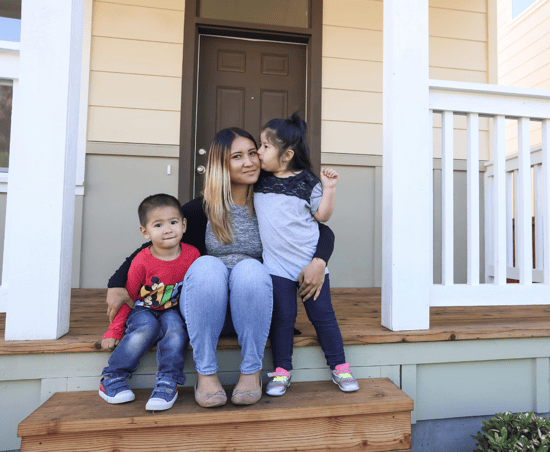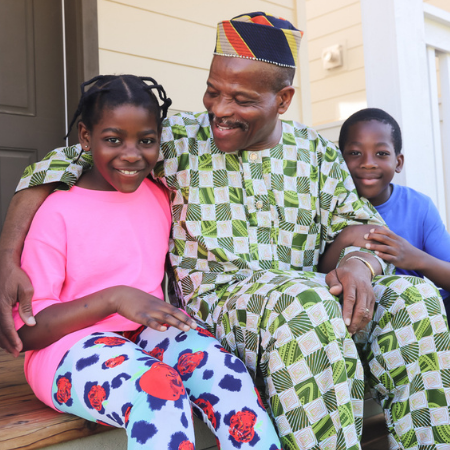What are the benefits of homeownership?
June 26, 2023 Habitat News Advocacy

 When a family can access decent, affordable housing, they gain more than a roof over their heads.
When a family can access decent, affordable housing, they gain more than a roof over their heads.
It is well-documented that affordable homeownership is a family’s stepping stone toward a brighter future – a future fueled by positive health, financial, and educational outcomes.
We have witnessed this ripple effect ourselves. For nearly 40 years, Habitat East Bay/Silicon Valley has partnered with more than 17,500 people – helping families afford homeownership, keeping people in their homes with critical repairs, and preparing more people for homeownership and other financial milestones. How these neighbors use this tangible foundation to build the next chapters of their lives, their legacy for future generations, is truly inspiring.
In fact, our Social Impact Study showed that, after moving into their Habitat East Bay/Silicon Valley homes:
- 73% of homeowners reported being able to build their savings
- 87% of Habitat kids graduated from high school
- 98% of homeowners are now proud of where they live
- 70% of homeowners saw an overall improvement in health problems like asthma, allergies, or mobility limitations.
- 99% of homeowners say they now reduce, reuse, and recycle
So, how can access to affordable homeownership change the trajectory of a family’s future?
Like any transformation, change doesn’t happen overnight. Once a family purchases a Habitat home, they don’t open their door and find a college diploma, a bag of built-up generational wealth, or the cure to asthma. What they do find is the stability and security from which to build toward their future goals.
When a family opens the door to a Habitat home that they purchased, they find a place they can count on. One free of health hazards, or the fear of rent increases, or the shadow of a potential eviction. One that offers a sense of rootedness in a community that could be theirs for decades. One for which each month’s mortgage payment is an investment in their own future.
Habitat for Humanity International’s research series takes what may seem instinctively true – families prosper in myriad ways with access to stable, decent, affordable housing – and offers concrete evidence to demonstrate its power and impact. In these briefs, you’ll see how homeownership impacts families, communities, and entire generations in some fundamental areas such as wealth building, education, health, and more.
 Wealth Building
Wealth Building
Habitat homeowners spend no more than about a third of their monthly income on their mortgage and housing costs. That means that they not only have the lion’s share of their income left for other necessities, savings, and future investment – they’re also paying down the principal balance of their mortgage and increasing their equity in their home. In fact, the Habitat for Humanity’s “Outcomes associated with homeownership" brief shares that the average net wealth of U.S. homeowners is 400% higher than that of renters, and home equity represents the largest proportion of wealth (34.5%) for U.S. households. For low-income Black and Hispanic/Latinx households, their home equity represents a larger share of their net wealth. This is wealth that can be invested back into these households and passed down for generations.
Education
From a quiet place to study to a single address over multiple school years, homeownership gives children the stability they need to flourish academically. According to Habitat’s “How does housing affect children’s education?” brief, a drop in test scores accompanied every residential move a student in a low-income household experienced between kindergarten and second grade (compared with residentially stable students from families with low incomes).
Health
When families must pay almost half of their income on inadequate housing, they are often exposed to basic health hazards such as mold, lead, overcrowding, and pests. We see in Habitat’s “How does housing impact health?” brief that low-income households that moved into safe, stable, affordable housing were associated with 18% fewer emergency department visits and 20% more primary care visits – which combined equate to a 12% ($580) decrease in Medicaid health care expenditures from the previous year. Providing low-income families the opportunity to access quality, affordable homeownership allows them to allocate more of their income on healthy food, health care, and timely home repairs.
Join the Conversation
Leave Us a Comment!
We love hearing from our community. Let us know what you think by leaving us a comment below.